Sheltered Sandy Shore
Coastal Organisms
Marine Organisms ![]()
Sandy shores can be divided into an exposed or a sheltered type, depending on the strength of wave action the shore receives. The sandy shore in Ting Kok is a sheltered type, which means it receives weaker wave action, and has a substratum composed of sand with smaller particle size as compared to an exposed sandy shore.
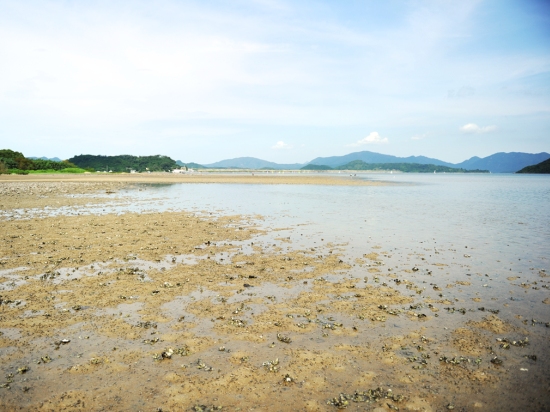
With fine sand particles and stable condition, the substratum can retain more moisture in the sheltered shore which results in containing higher species diversity and a large quantity of organisms than those of the exposed shore.
Nevertheless, the distribution of species is determined by ecological gradients of shore. Ecological gradients include vertical gradient, horizontal gradient and depth gradient.

| i) | Vertical gradient is caused by tidal cycles. Sand in the lower intertidal zone only dries out on the surface during low tides, whilst sand in the upper intertidal zone dries out to a greater depth for a longer period. Being uncovered by tides, the upper intertidal zone normally exposes to air and experiences more extreme temperature change than the lower intertidal zone. Therefore, organisms inhabiting in the upper intertidal zone are expected to be more capable of coping with water stress. |
| ii) | Horizontal gradient is created by local topography and oceanography. |
| iii) | Depth gradient is determined by oxygen availability and particle sizes of the sandy shore. Generally speaking, oxygen availability decreases as you go deeper to the ground. Sand gets darken in colour is due to the action of anaerobic bacteria. |
In addition, boulders and rubbles patchily scatter on the sandy flats in Ting Kok, forming scattered gravel shores along the sandy shore.
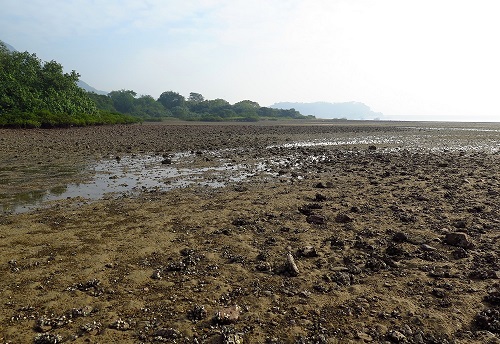
At first glance, this type of shore may look dull. Nevertheless, if you observe carefully, you will discover a dynamic habitat. No matter on the hard surfaces of boulders and rubbles or the crevices and spaces under them, boulders and rubbles can provide homes and refuge for different kinds of organism to escape from hot sun, dehydration and hide from predators, for instance, the shore birds.
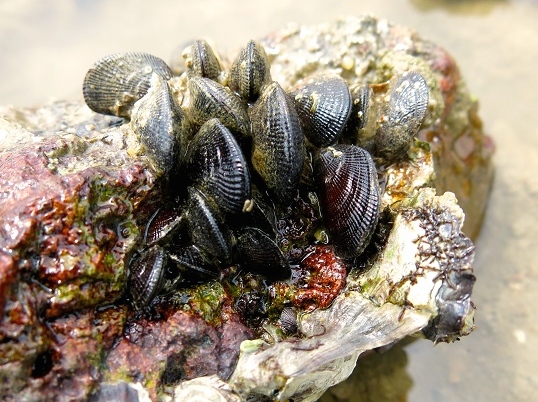
Brachidontes variabilis |
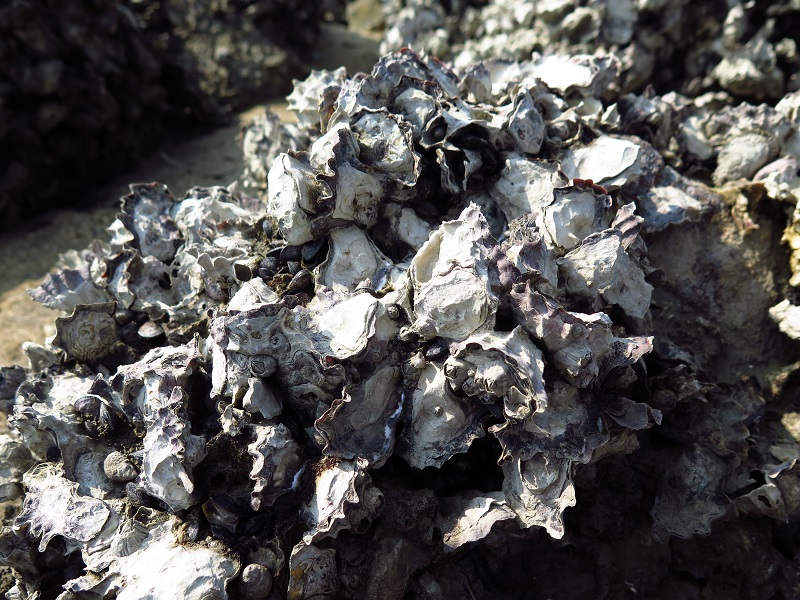
Common Rock Oyster |
|
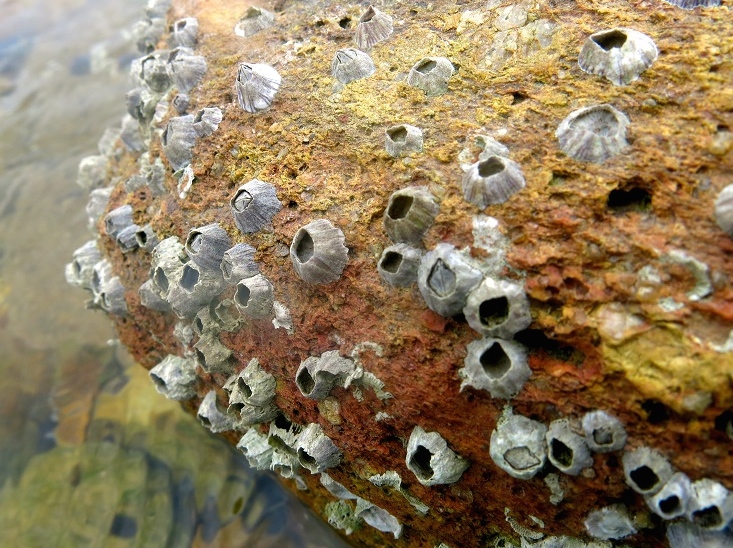
Barnacle |
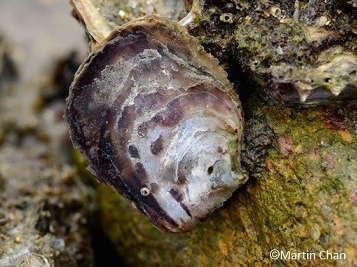
Isognomon ephippium |
| Back to Top |
![]()
Organisms on sandy shores can be categorised into three groups by their ways of habitation:
| i) | Surface dwellers, which are collectively referred to as “epifauna”. Most of the epifauna are mobile crustaceans such as crabs. They are usually scavengers, feeding on dead animals or detritus on top of the sand. Some of the epifauna possess a comprehensive camouflage to mask themselves from predators and preys. |
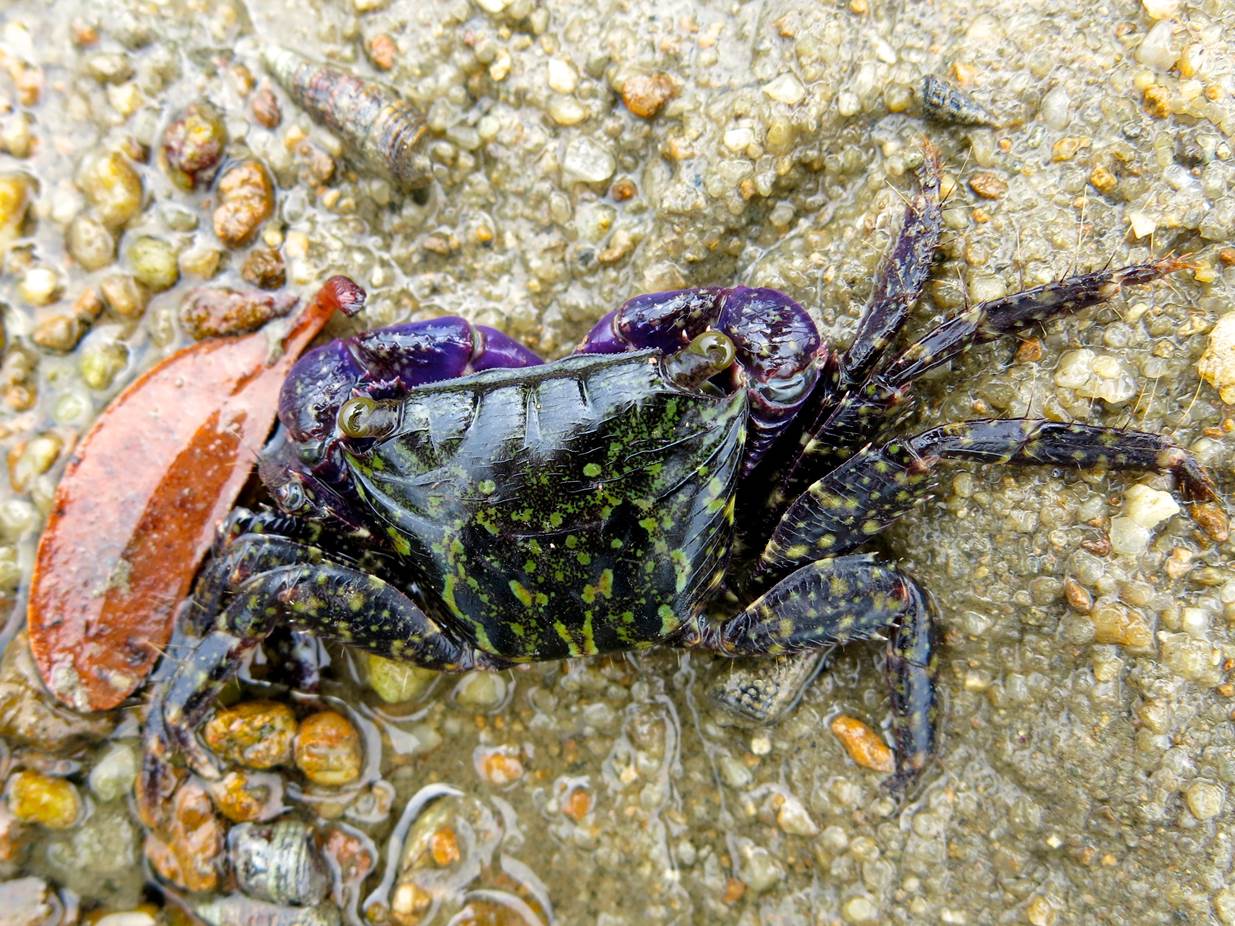
Metopograpsus frontalis |
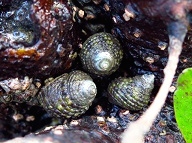
Topshell |
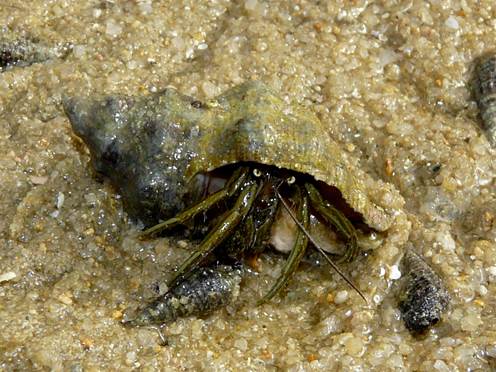
Hermit Crab |
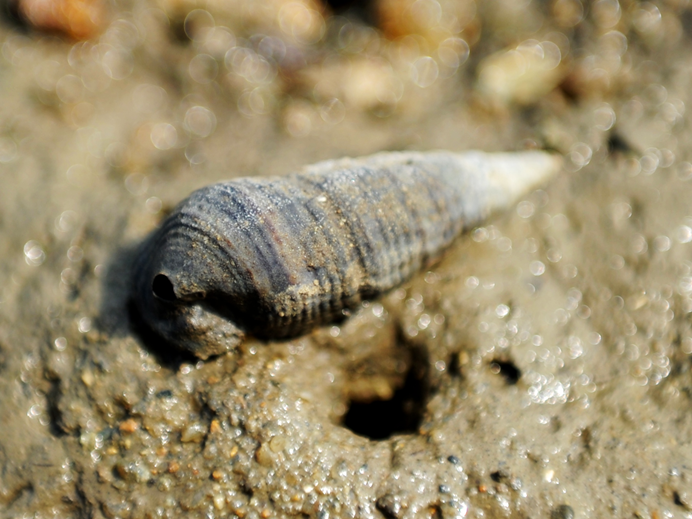
Terebralia sulcata |
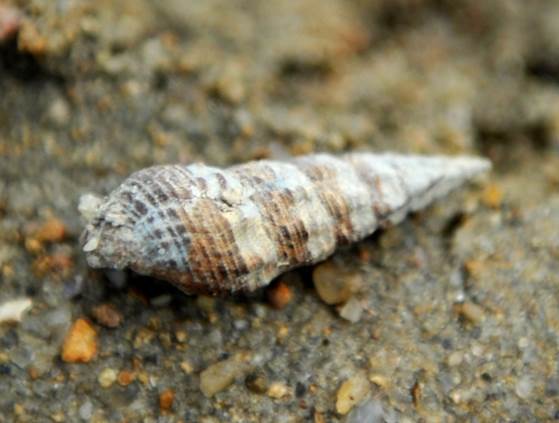
Batillaria sp. |
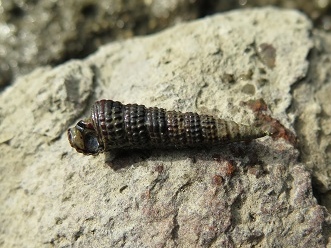
Pirenella sp. |
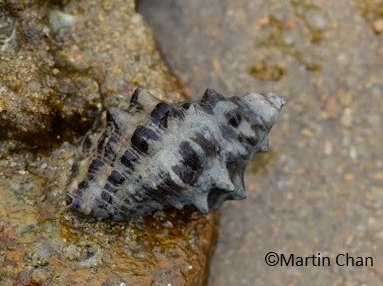
Dog Whelk |
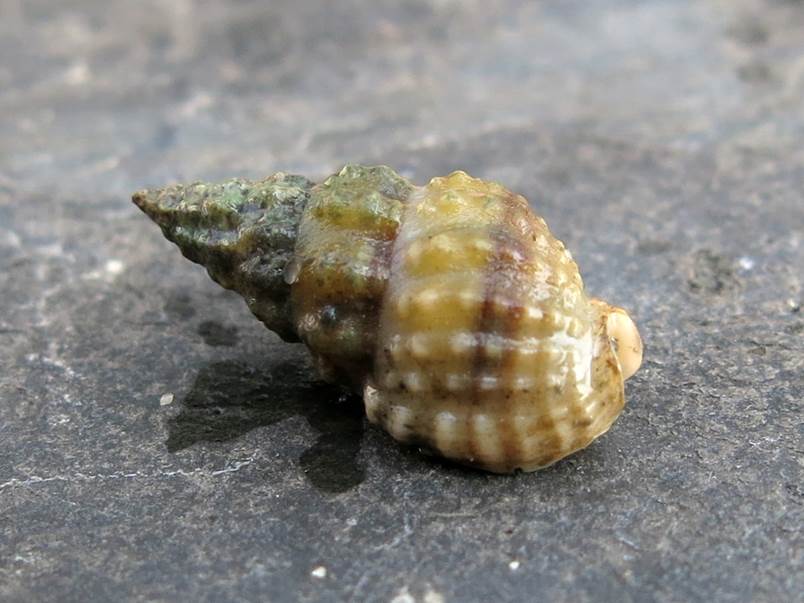
Reticunassa festivus |
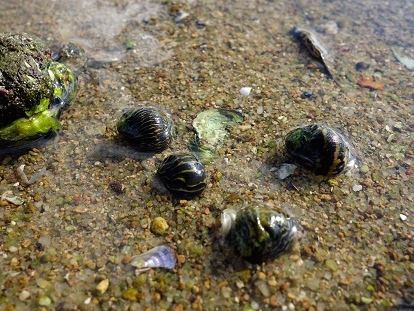
Clithon sp. |
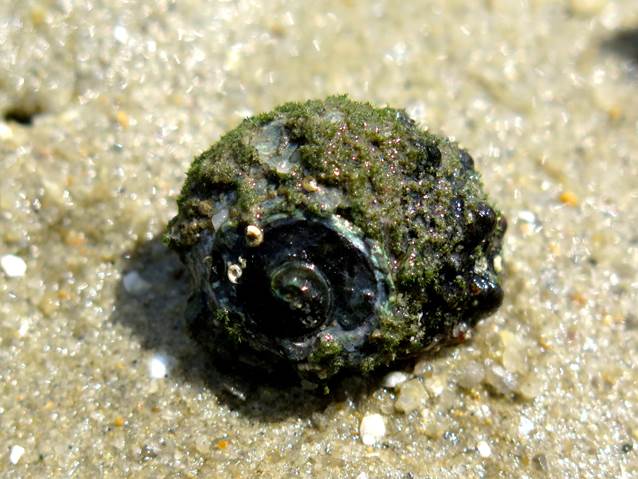
Turban Shell |
| ii) | Burrowers, which are collectively known as infauna, including both shallow and deep burrowers. Most infauna are bivalves and worms. |
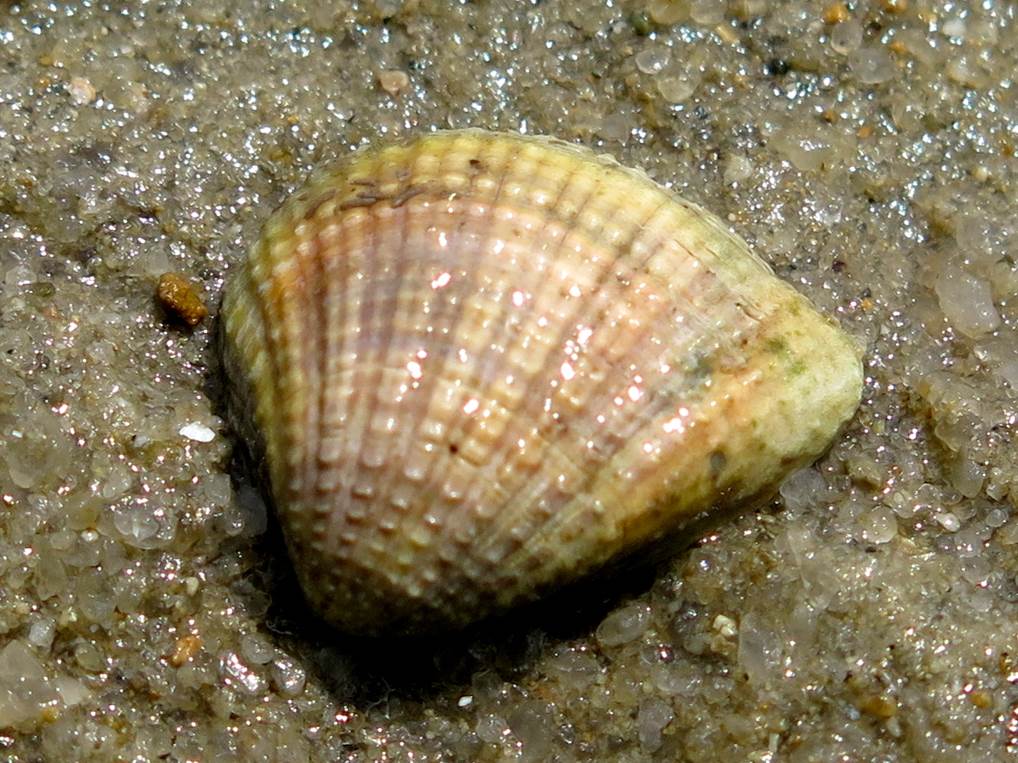
Anomalodiscus squamosus |
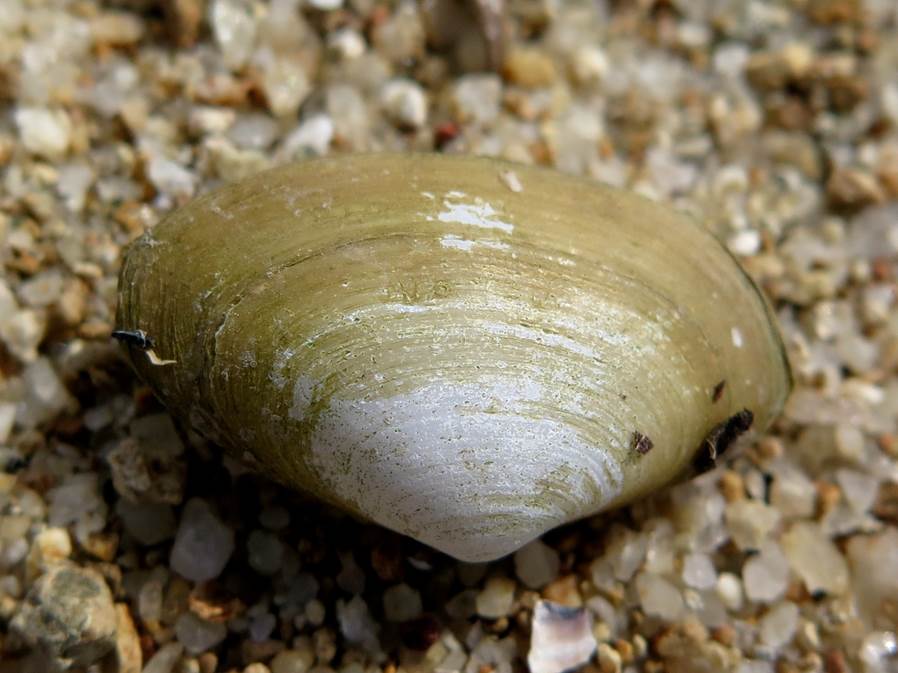
Coecella sp. |
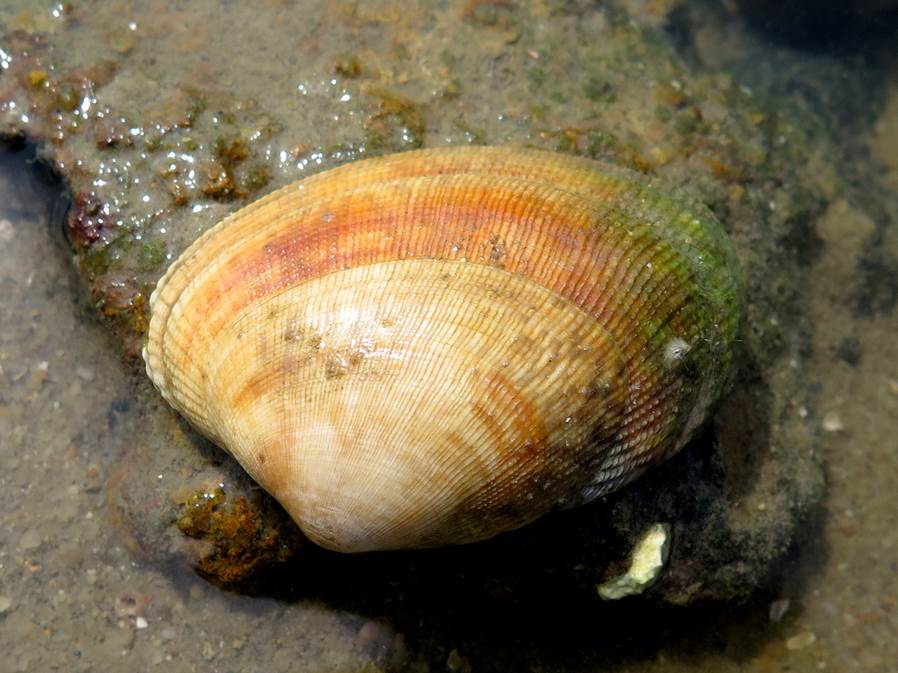
Ruditapes sp. |
||
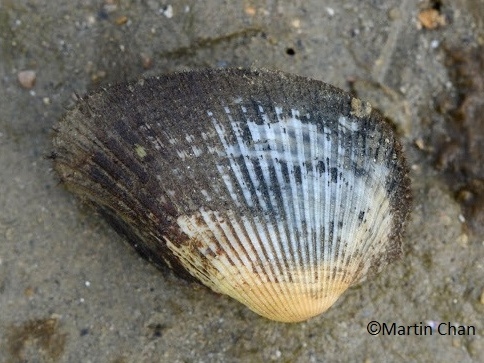
Anadara cornea |
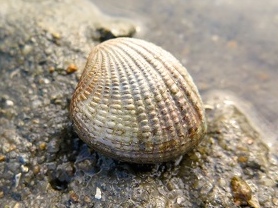
Gafrarium sp. |
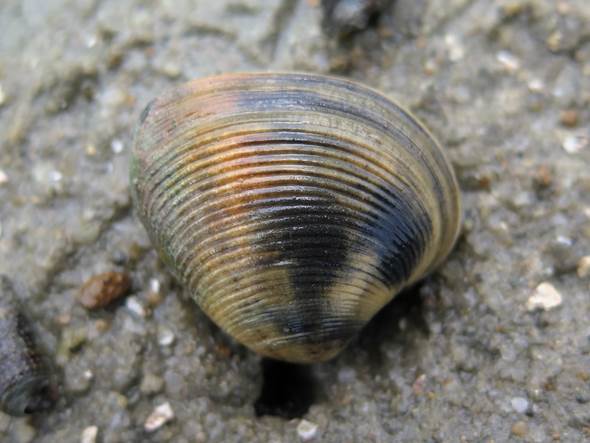
Marcia sp. |
||

Siphonosoma cumanense |
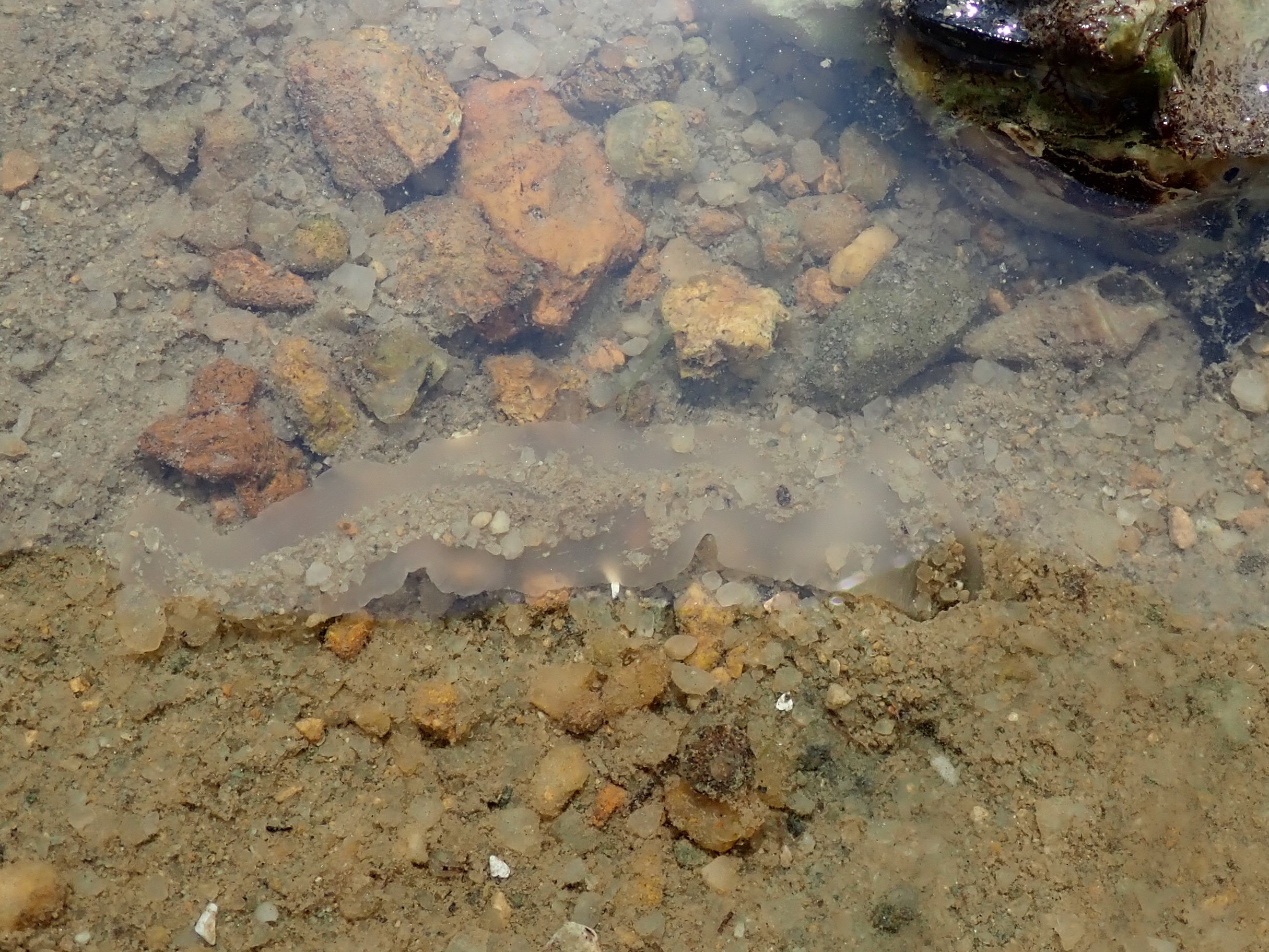
Innkeeper Worm |
| iii) | Temporary burrowers, which may be surface dwellers or burrowers, depending on the phases of tidal cycle. |
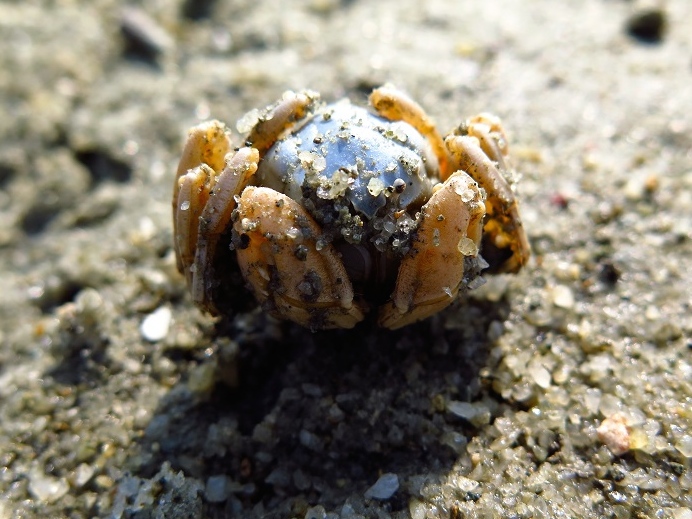
Soldier Crab |
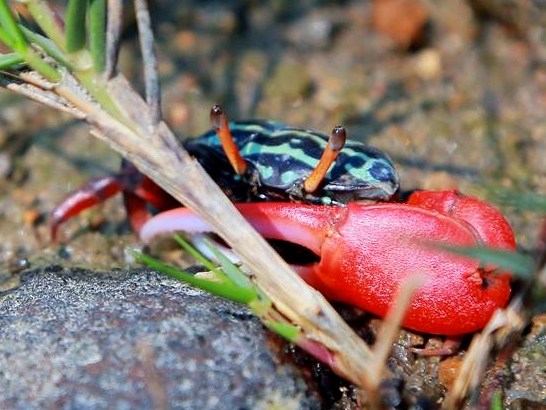
Fiddler Crab |
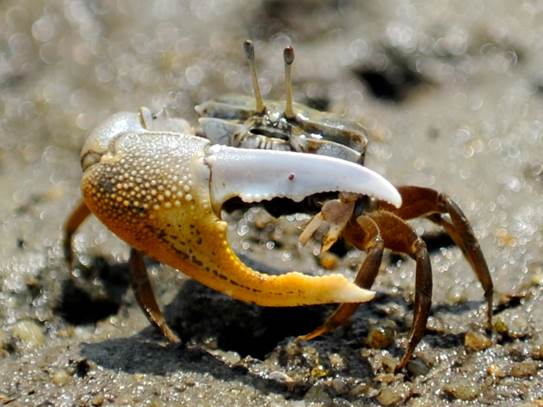
Fiddler Crab |
||
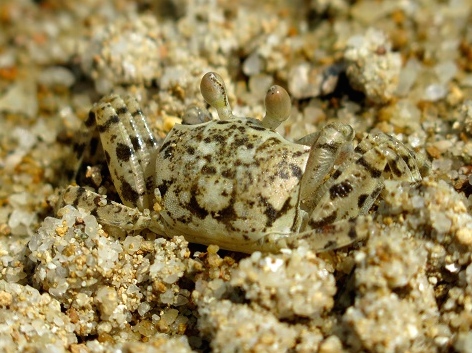 Ghost Crab Ocypode sp. |
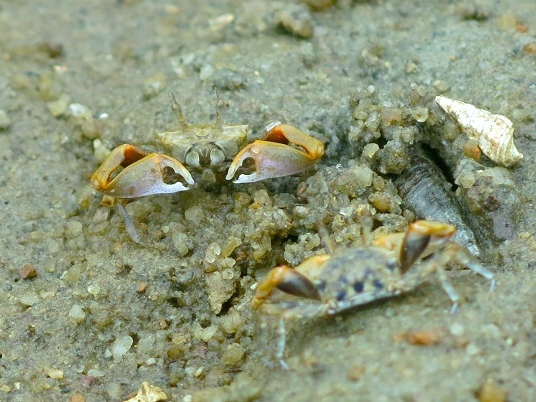
Buddhist Crab |
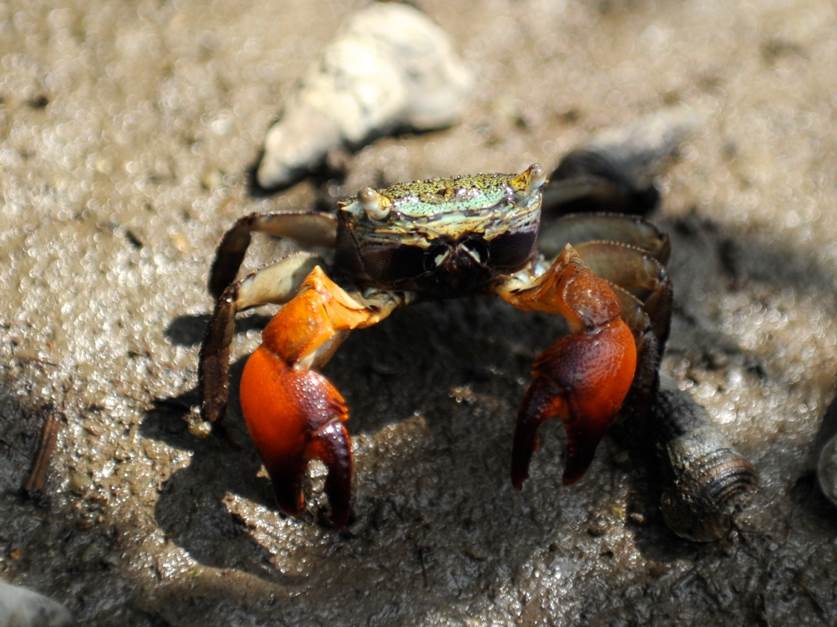 Sesarmine Crab |
||
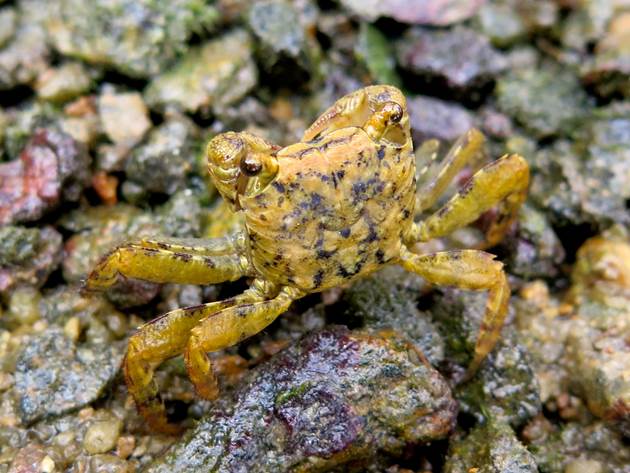 Sesarmine Crab |
No matter living on the sand surface or within the sand, animals have to face different challenges.
Living on the sand surface allows animals to search for food or mates easily. However, since the shore is exposed to air and intense solar radiation at low tide, organisms are at the risk of water loss and heat stress. They are also easier to be washed away by waves.
Oppositely, organisms living within the sand are safe from wave action, predation and desiccation during low tides. However, they have to face challenges in finding food, mates and enough oxygen for survival.
| Back to Top |
![]()
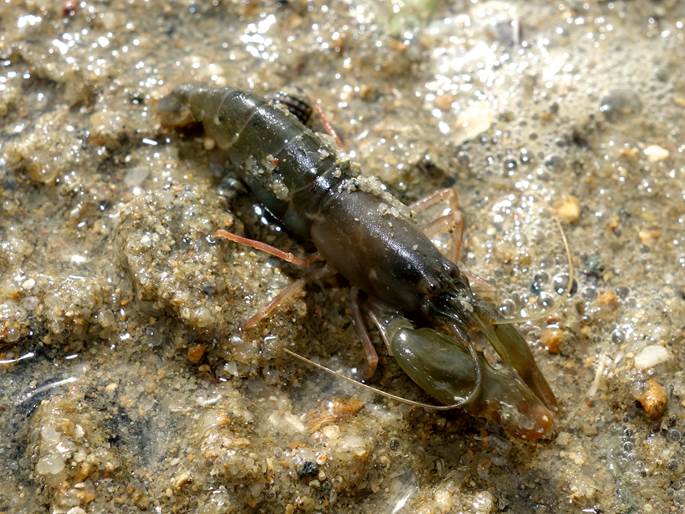
Pistol Shrimp |

Green Urchin |
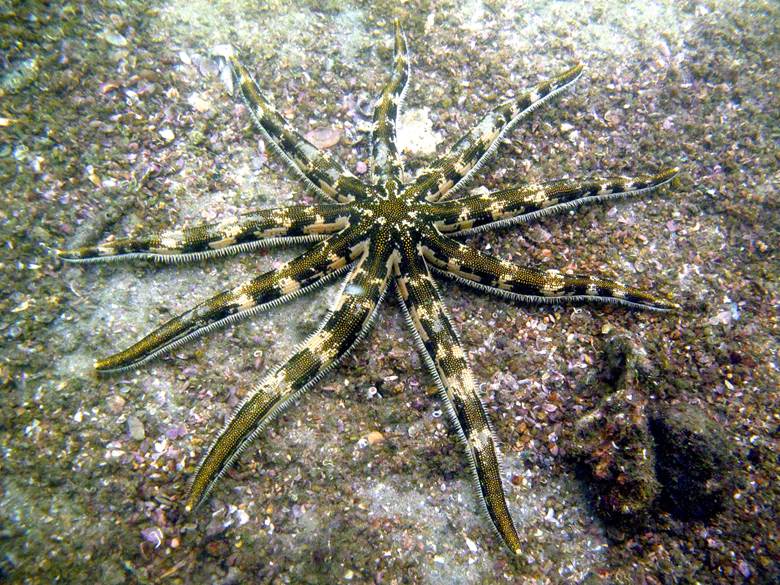
Starfish |
||
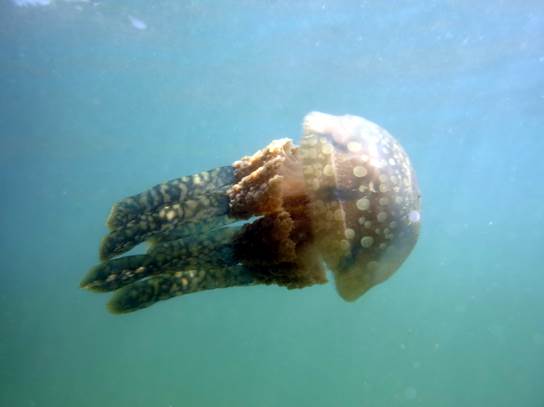
Jellyfish |
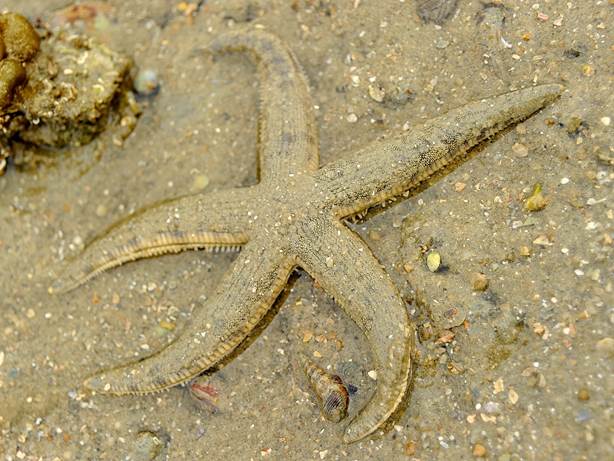
Starfish |

Sea Cucumber |
||
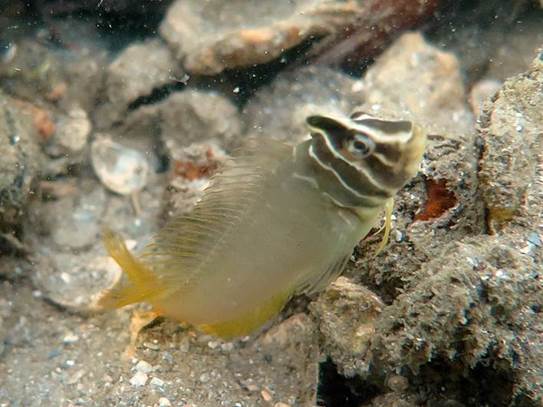
Flesh-Crested Blenny |
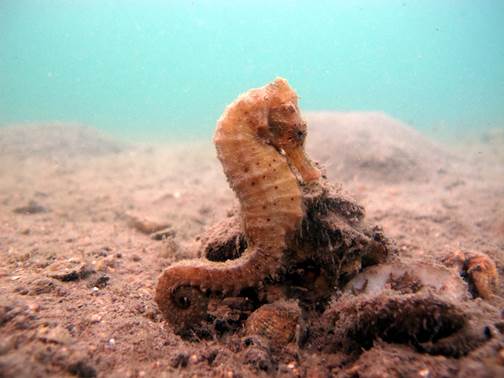
Spotted Seahorse |
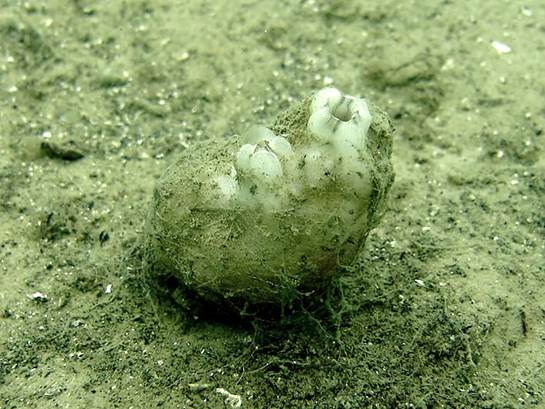
Sea Squirt |
||
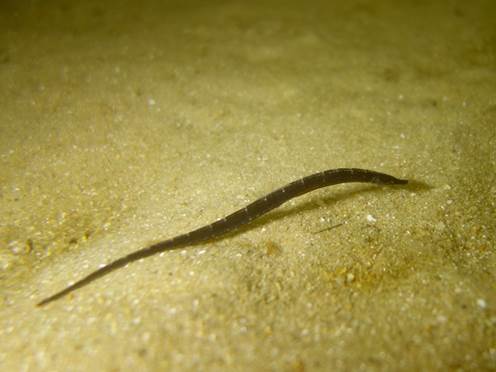
Pipefish |
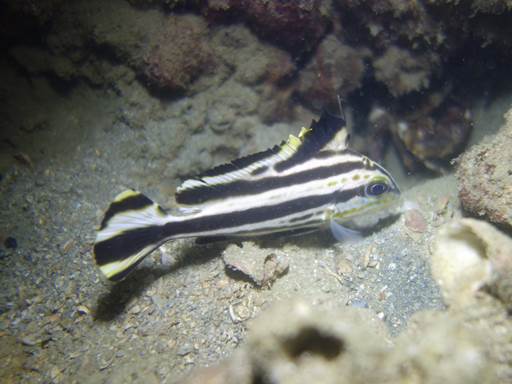
Striped Sweetlips |
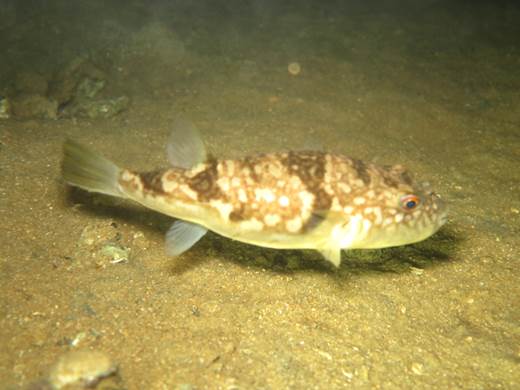
Hong Kong Pufferfish |
||
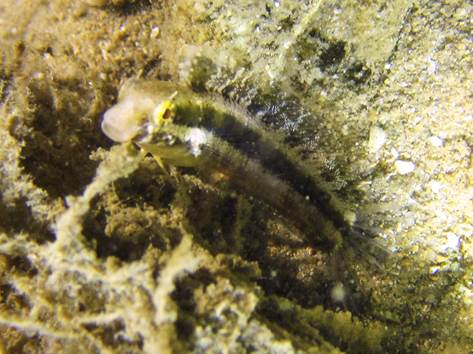
Striped Poison-fang Blenny Mimic |
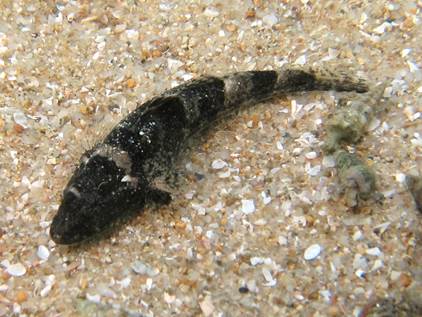
Sleepy Goby |
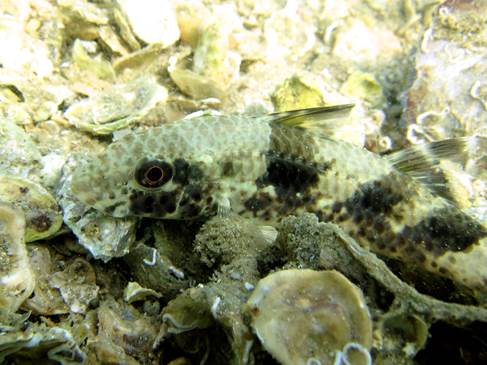
Freckled Goatfish |
||
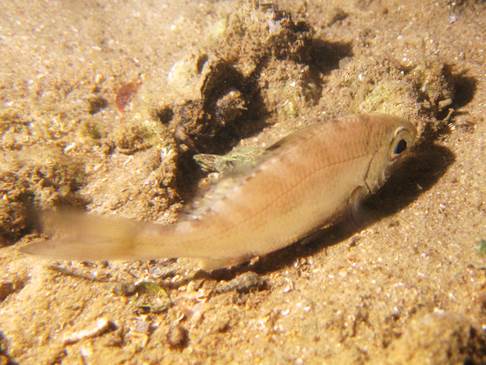
Slender Sliver-biddy |
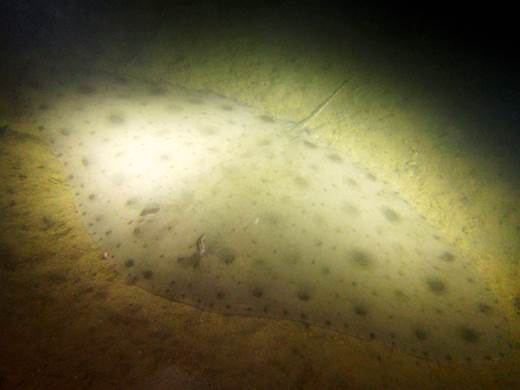
Butterfly Ray |
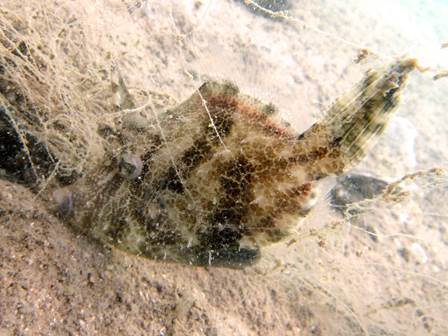
Fan-bellied Leatherjacket |
||
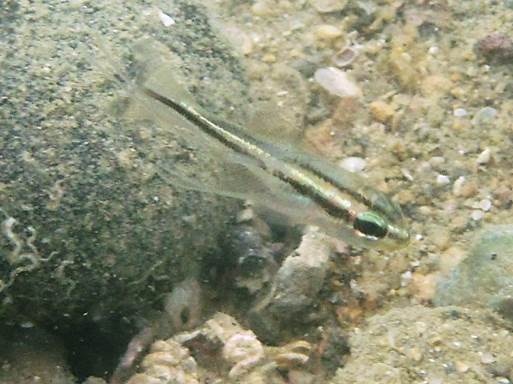
Broadbanded Cardinalfish |
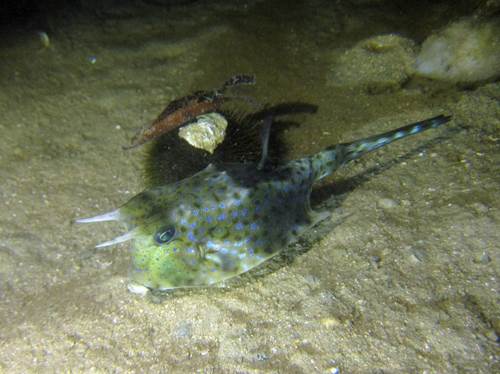
Longhorn Cowfish |
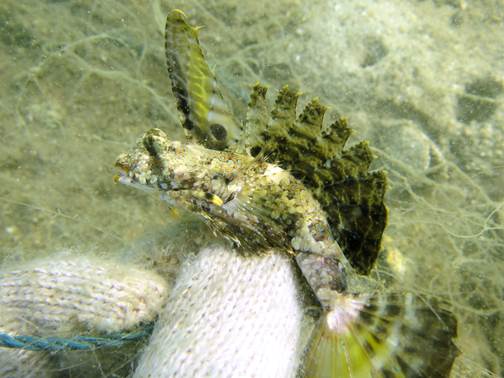
Orange-black Dragonet |